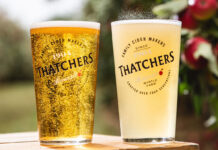When customers visit the on-trade they expect quality – and for most drinks that means a consistent cold serve.
For publicans to achieve this they need the right tools for the job.
Equipment suppliers contacted by SLTN said there are a number of factors operators should consider when choosing back-bar fridges.

Malcolm Harling, sales and marketing director at Williams Refrigeration, said bottle coolers tend to be the main element of back-bar refrigeration and that these “need to look stylish and display premium bottled drinks to eye-catching effect while being robust enough to survive a punishing level of wear and tear”.
Adjustable shelves are “essential” in outlets which stock a range of different sized bottles and cans, said Harling, adding that operators should also seek out a refrigerator with a variable thermostat.
“Variable thermostats allow operators to set the optimum temperature, between 4ºC and 10ºC, to suit the environment, customer preference and any specific requirements of the beverage,” he said.
It’s not just bottles and cans that need to be kept cool on the back-bar, though. Harling suggested operators consider a small fridge for keeping garnishes fresh and milk cool in venues offering hot beverages.
“And, for those serving fine wines there are specialist display units, which enable customers to see the selection available while keeping wine in its optimum condition,” said Harling.
Looks may be important, but fridges also need to be practical.
Lee Noble of online equipment retailer Shop-Equip said operators should consider the long-term costs when purchasing a refrigerator.
“Energy efficient models may demand a slightly higher purchase price, but the savings generated from reduced energy consumption can often recover the cost of the cabinet very quickly, whereas cabinets with a lower initial cost can cost significantly more over the total ‘life’ of the cabinet once running costs are taken into consideration,” said Noble.
Improved energy efficiency is the “main advantage” to investing in new equipment, he said.
Refrigerators aren’t the only piece of kit keeping things cool behind the bar.


Ice machines are also “essential pieces of back-bar kit”, according to Mark Hogan, marketing and sales manager of Foodservice Equipment Marketing.
He said operators should look for a machine that’s reliable and that can be conveniently situated in the bar “to ensure drinks can be served with mountains of ice even when there’s a rush at the bar”.
Simon Aspin, commercial director at Hubbard Systems, distributor of Scotsman ice machines, said that when it comes to convenience, the latest back-bar ice machines are designed to produce large amounts of ice without taking up too much space.
Aspin said operators should choose models with “practical features that make life easier”.
“For example, when it comes to a back-bar ice maker with an integral storage bin, you should be looking for half the capacity as storage,” he said.
“In other words, for a machine that makes 40kg of ice per day you should have ice storage for around 20kg.
“This helps cope with peak demand.”
While a larger ice machine may be ideal for producing volume, it isn’t always practical for a tight back-bar.
If space is an issue, Hogan suggested operators consider front-venting ice machines as an alternative.
“These will require little or no top or side clearance and can be quickly and easily installed,” he said.
“This means they can be slid into the tightest spaces and set to work pretty much right away.”
Space isn’t the only practical concern. Ambient temperature can also take its toll on ice production and so operators should seek out a model that is able to take the heat.
“[Look for] a model that is able to work in high ambient temperatures, up to 43°C, so you can be sure that the ice supply won’t run out when the heat is on,” he said.
Purchasing the right machine is the first step, but that’s not the end for publicans, according to Aspin, who said operators must also consider maintenance and cleaning.
“Whatever brand you chose, make sure that it offers after-sales support, including holding a good stock of spare parts and consumables (such as water filters), and can arrange ‘preventative planned maintenance’ service contracts on equipment,” he said.
Ease of cleaning was also highlighted by Hogan, who said operators must remember that ice is “classed as a food” and so ice machines must be kept hygienically clean.
“The storage bin needs emptying, cleaning and sanitising on a regular basis,” he added.
“Machines should be deep-cleaned and sanitised every six months.”

























